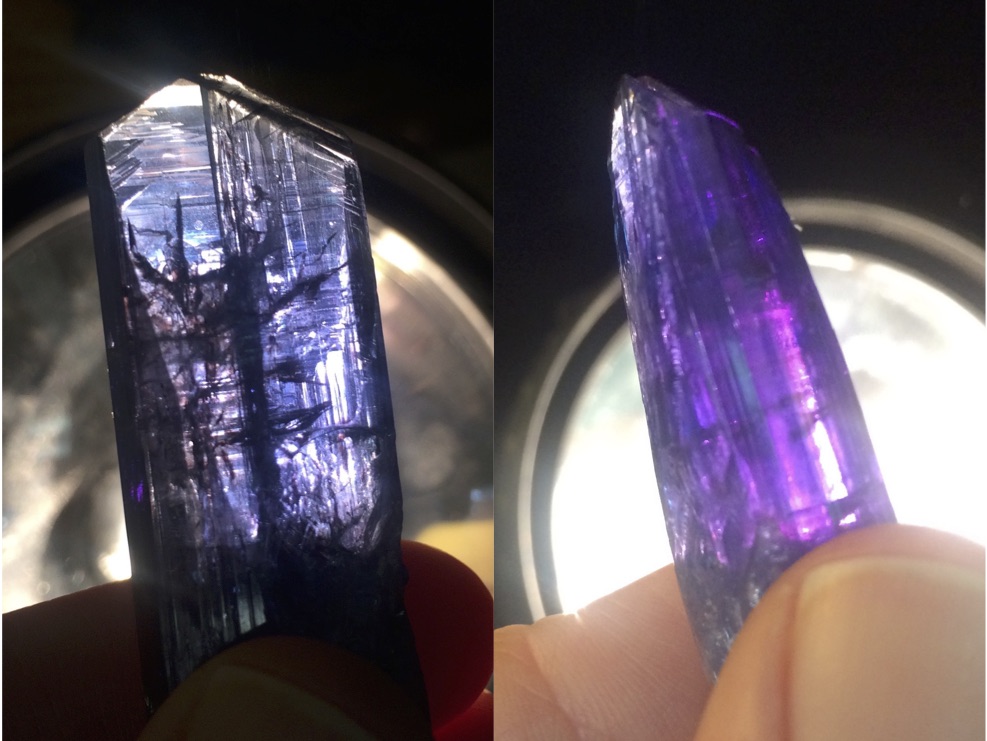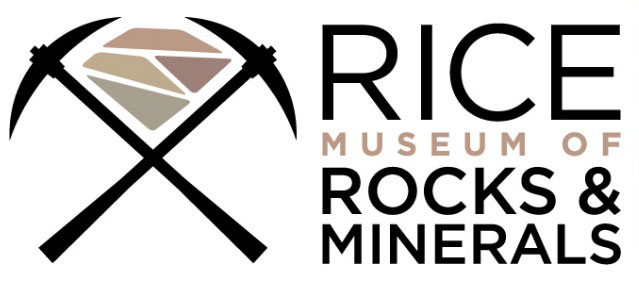
What color is this mineral? Look at it one way, and it appears blue. Turn it sideways, and it becomes bright purple! What exactly is going on?
This is tanzanite, a variety of the mineral zoisite found in only one location in the world (Tanzania, near Arusha). It provides a beautiful example of a mineral property called pleochroism.
Have you ever seen a crystal prism hanging in a sunny window, throwing rainbows all around the room? This is an example of how transparent crystals can bend and split regular white light rays to produce colorful effects. Crystals have this ability because all crystals are made from atoms that stack together in regular, repeating building blocks like scaffolding. The specific size and shape of the repeating unit determines how light splits and bounces around once it has entered the crystal.
In minerals with pleochroism, like tanzanite, light entering the crystal from the front acts differently than light entering the crystal from the side. (Note the photos above were taken in front of a flashlight, not just in regular ambient light.) Light entering from the front makes its way through the crystal’s interior “scaffold” and comes out producing the color blue. Light entering from the side has to go through the scaffold a different way, and the color that emerges from that direction is purple.
Tanzanite can also produce a third color–bright red!–when illuminated from the top, but our crystal is opaque on the bottom so unfortunately this color can’t be transmitted.
Many minerals show pleochroism under the right conditions, but tanzanite is special because its color changes are easy to see and very dramatic.
This post is part of our What’s in the Box? series.
